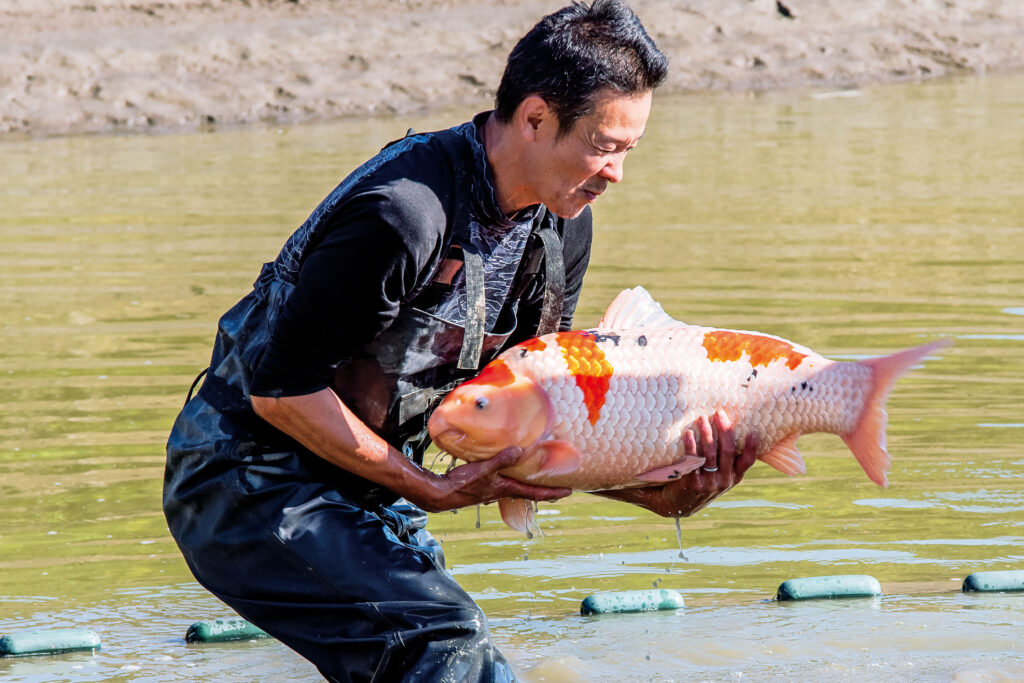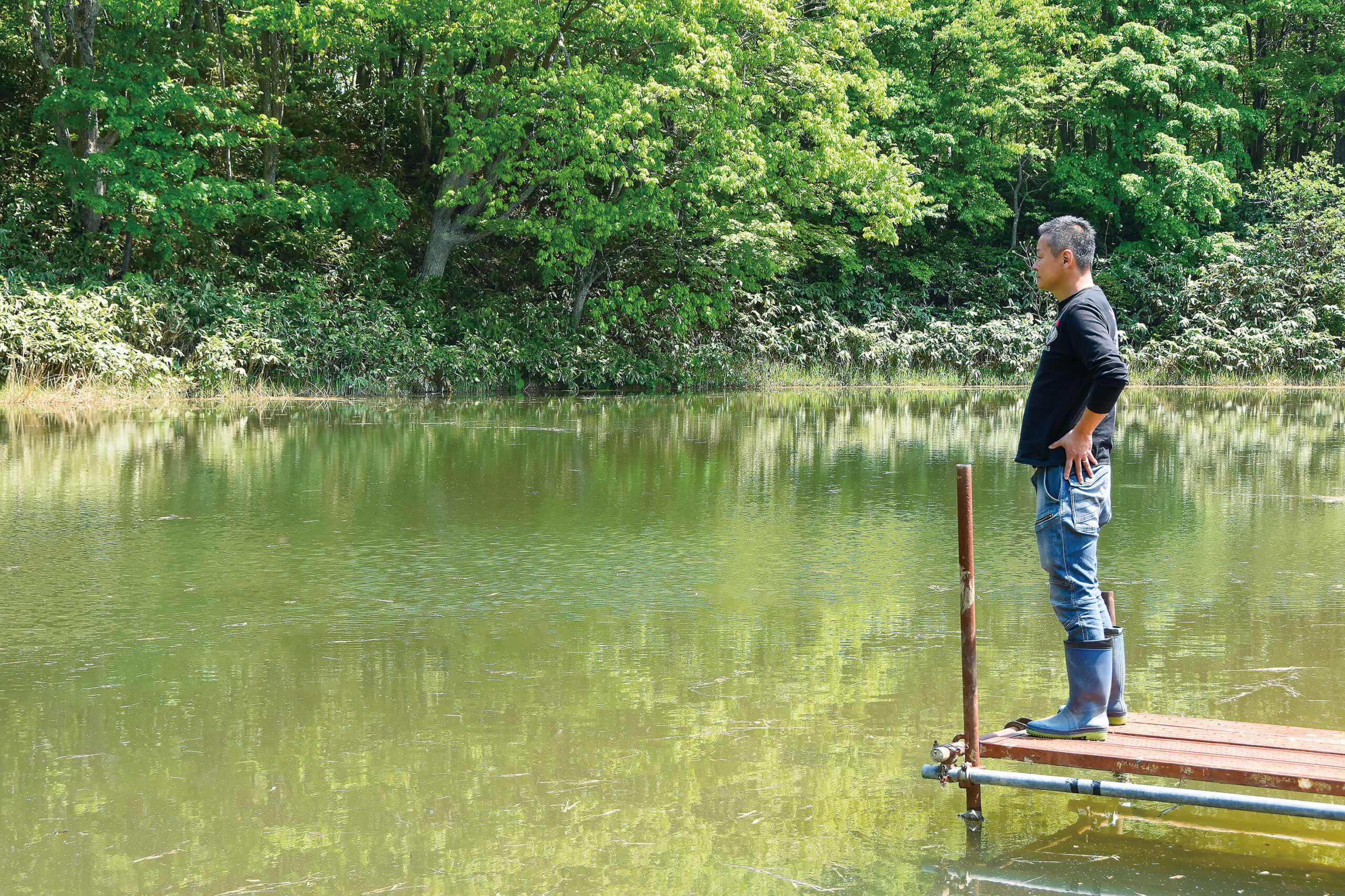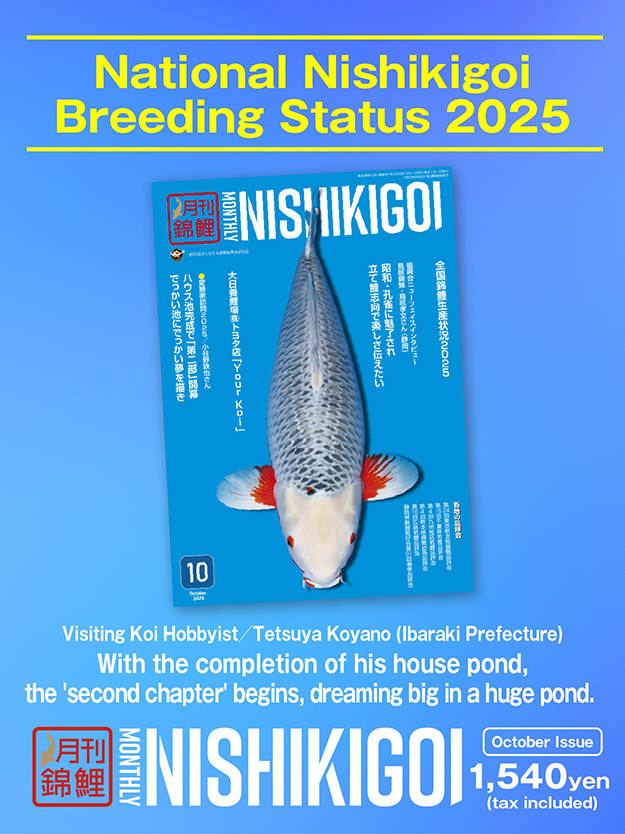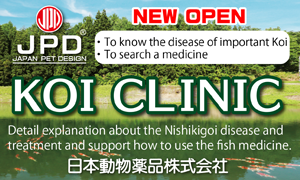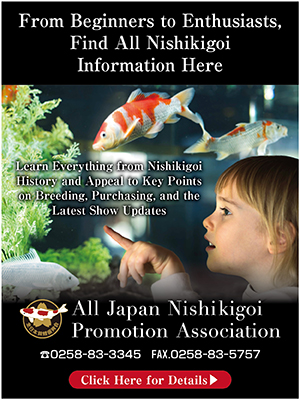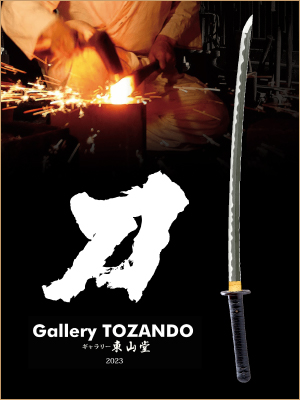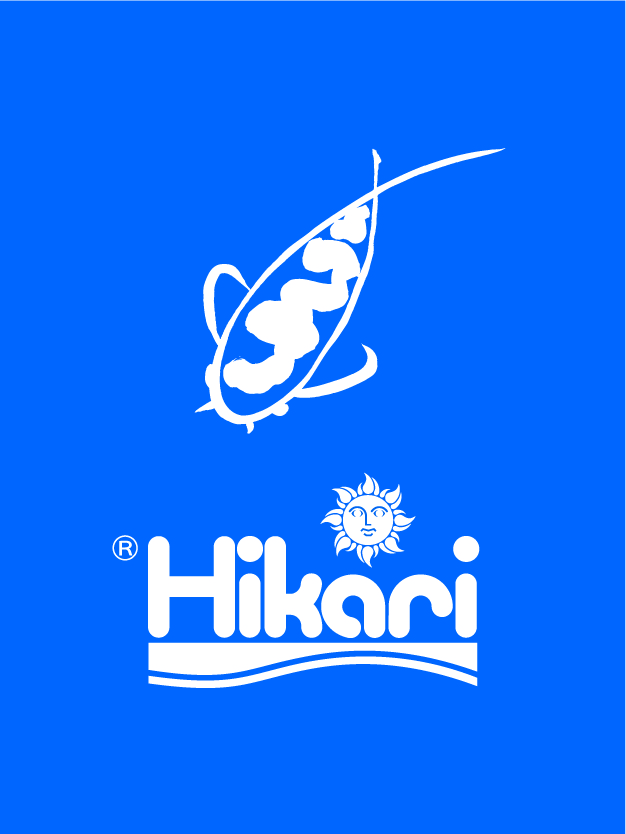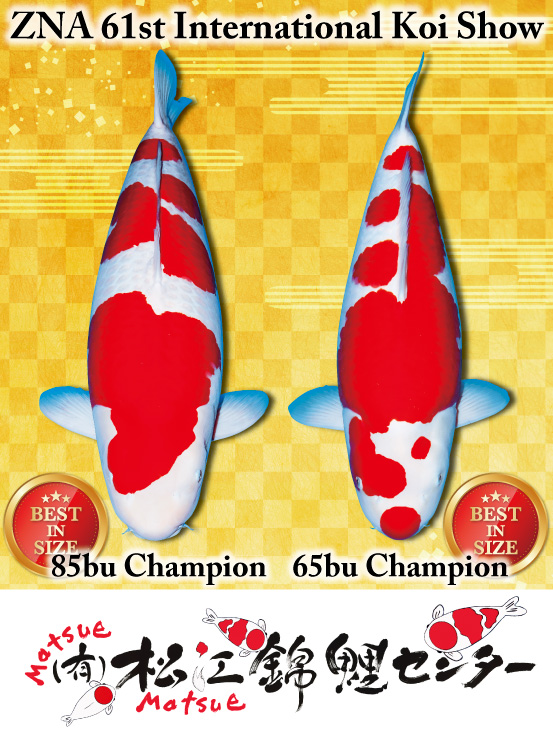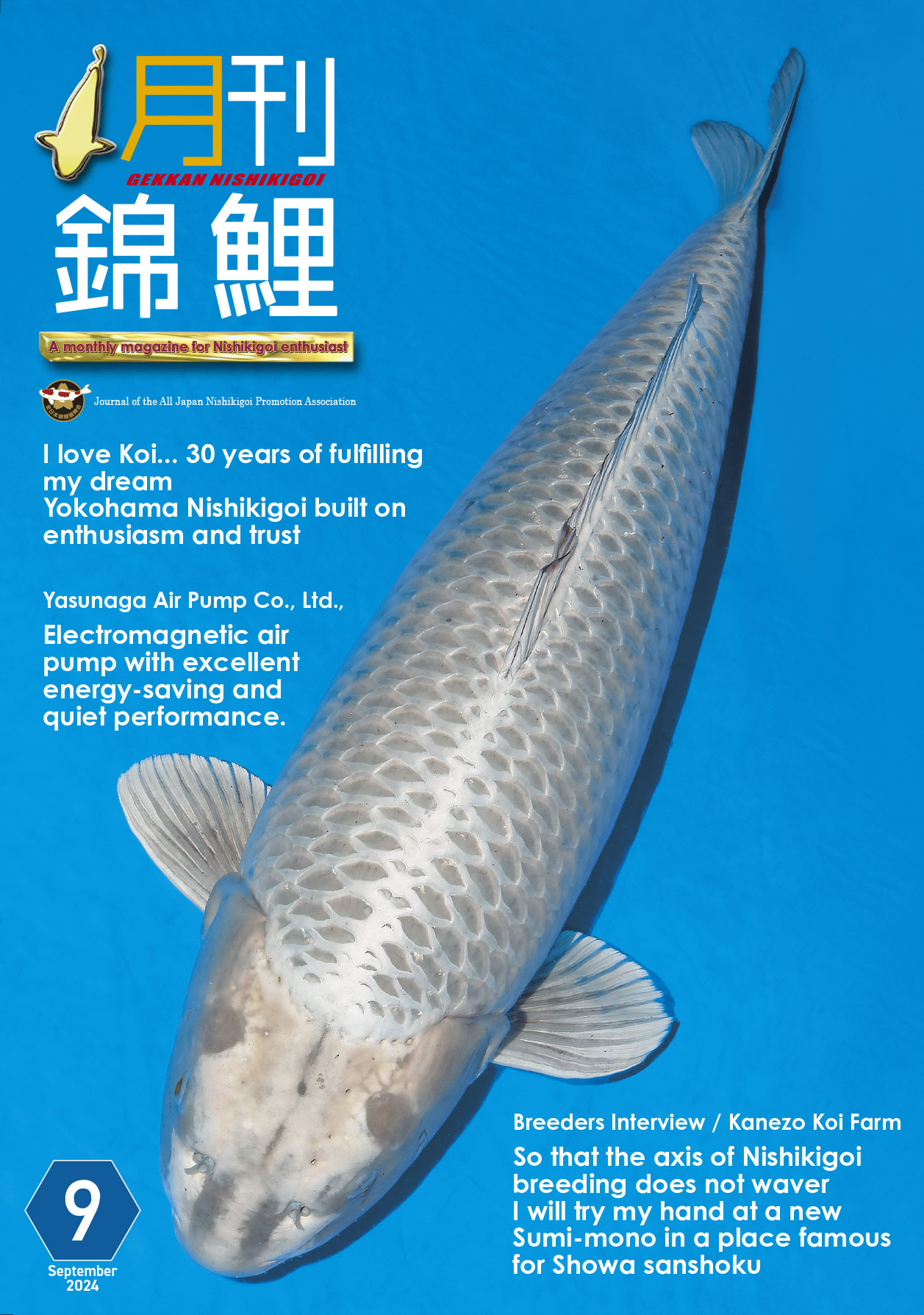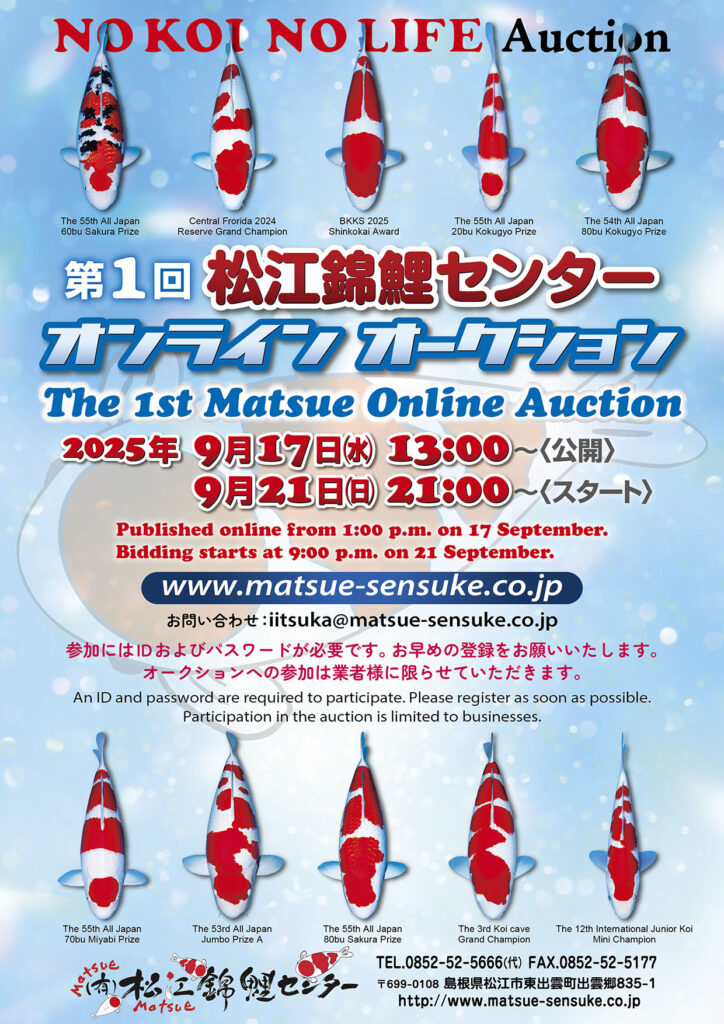To increase enthusiasts, the challenge is winter breeding.
Platforms like YouTube serve as an introductory guide.
― Regarding keeping and raising koi, are there any disadvantages compared to doing it inland?
Takahashi: Definitely winter. Of course, we use boilers, but we can’t maintain the water temperature high enough to feed them sufficiently. So, from the time we bring them up from the wild ponds until spring, keeping them in our shop is particularly tough. Especially for the big koi.
― Fuel costs, right?
Takahashi: Yes. They’ve gone up tremendously. For the larger ponds, we can barely manage to heat them to 17°C, and we can’t even feed them as much as we’d like. As for the tosai, we’re keeping their ponds at 21°C and feeding them properly.
― When trying to increase the number of people who keep koi in Hokkaido, that becomes a challenge, doesn’t it?
Takahashi: The winter is inevitably tough.
― Basically, they have to be kept indoors, right?
Takahashi: Well, we do have some customers who overwinter them in outdoor pond gardens, but since the water freezes over, it’s inevitable that some koi die off by spring. So, for customers who keep them in outdoor ponds, we suggest setting up a temporary pool or tank indoors just for the winter. Of course, some can manage it while others can’t.
― Like Mr. Hirajima, who was introduced in the October 2023 issue of our magazine?
Takahashi: That method is ideal. For overwintering, a canvas pool is sufficient, and it’s a good option for clients with the space. Although overwintering is possible outdoors even when frozen, they often die by spring.
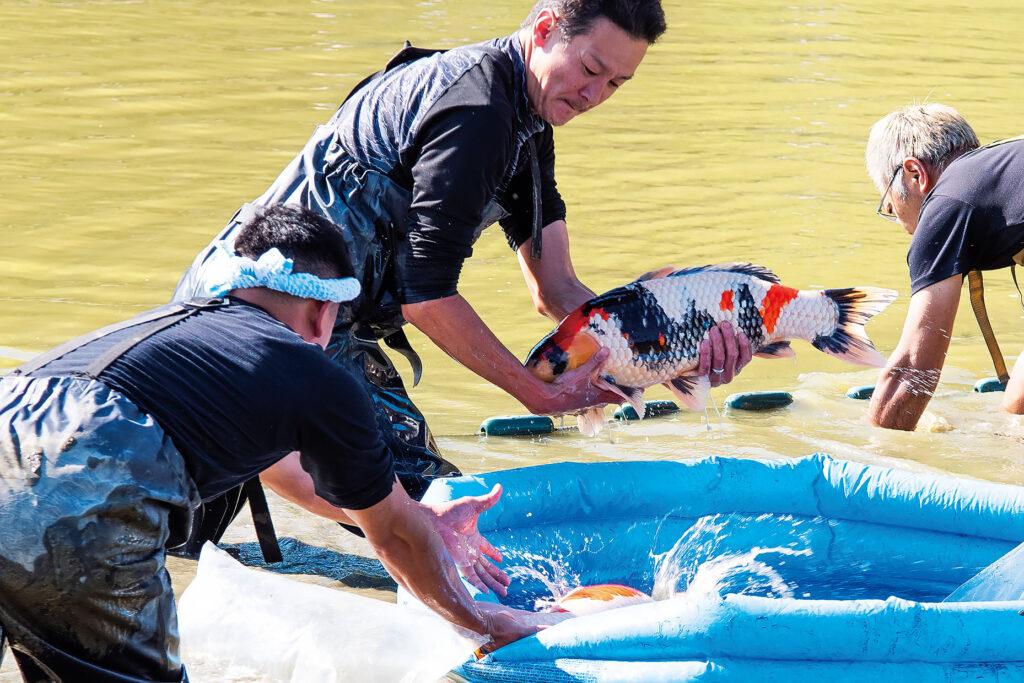
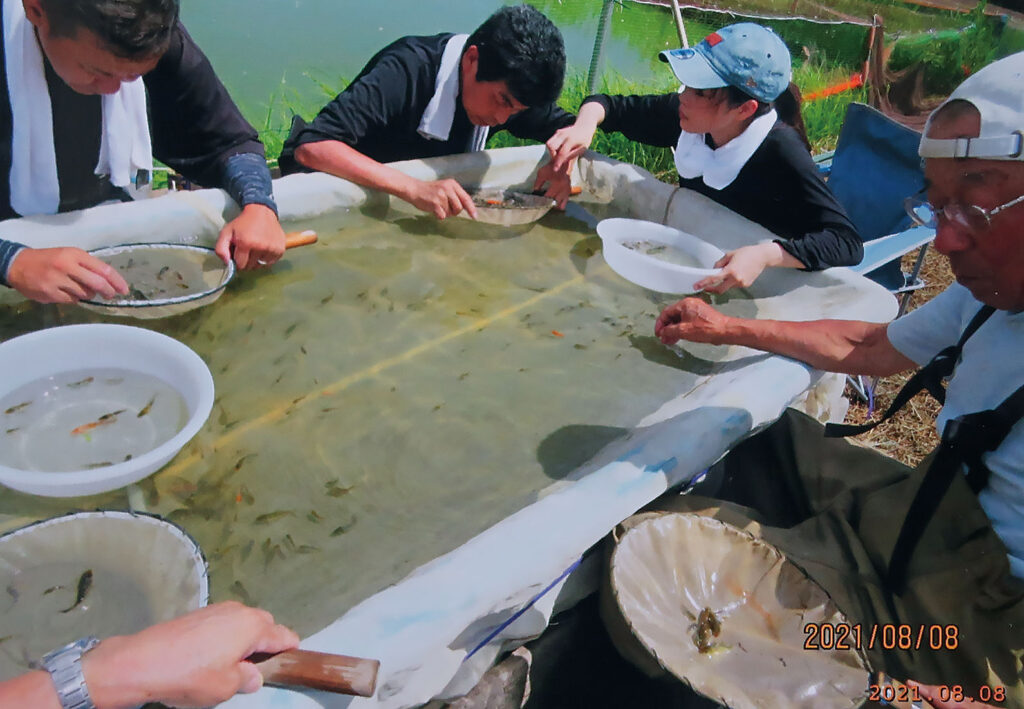
― It seems that summer has become a more comfortable climate for koi, but the problem is winter… That’s the key to expanding the base of koi enthusiasts in Hokkaido. Sapporo Kinsui probably has the know-how for that, but the issue is that in all of vast Hokkaido, Sapporo Kinsui is the only koi shop capable of supporting customers…
Takahashi: Exactly. Especially in the summer, even if we want to go, we can’t.
― Even though they might become competitors, wouldn’t it actually be better to have one or two more stores?
Takahashi: Even if it’s just one or two more… I think it might increase the number of breeders even further.
― That being said, as the oldest established store in Hokkaido, I believe Sapporo Kinsui still plays a significant role. My impression of your shop is that it offers a well-balanced selection of koi, catering to everyone from beginners to those aiming to win prizes at competitions.
Takahashi: The number of koi show-grade koi we can offer varies from year to year, so it’s really a challenge, but a balanced lineup is definitely the ideal.
― To be able to cater to customers from various demographics.
Takahashi: We actually get quite a few young customers. There aren’t many shops like ours in Hokkaido, so we occasionally get featured on TV. Some people visit after seeing those segments. Over the past four or five years, I’ve definitely noticed an increase in customers. For some, YouTube serves as their introduction to us, and they end up visiting the shop. They come for advice like, “I’m having trouble raising my koi—what should I do?” or to look for higher-quality koi. We get calls from all over Hokkaido, and some people even come directly to the store.
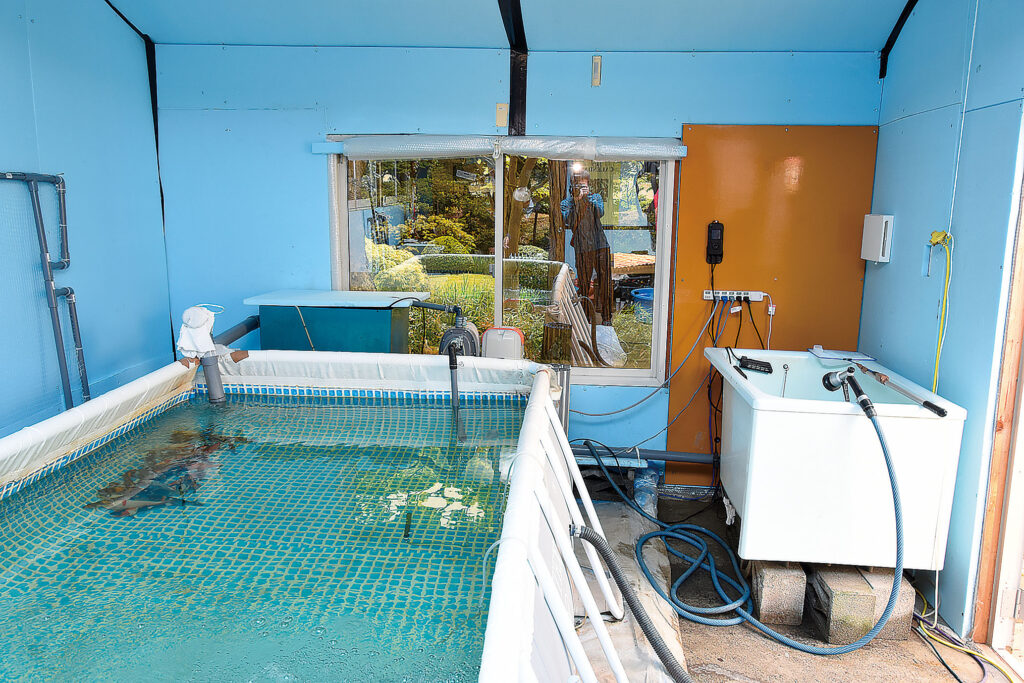
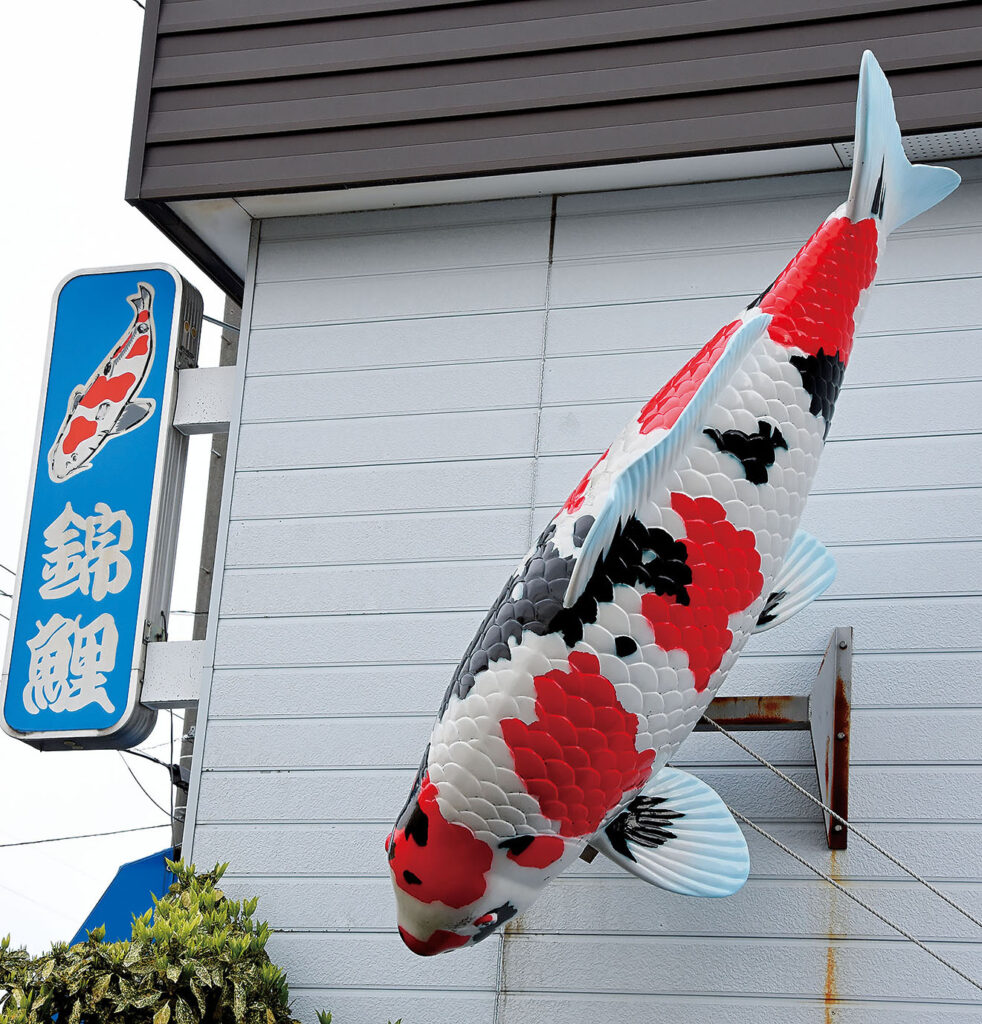
― Hokkaido is vast, so there are probably people raising them in unexpected areas.
Takahashi: Absolutely—from Nemuro to Wakkanai… It seems there are quite a few people who keep them.
― In that sense, you could say it’s a significant responsibility. For koi enthusiasts in Hokkaido, it’s like the last stronghold, isn’t it?
Takahashi: Well, when you put it that way, I guess that’s true… but it’s not like I feel that strong of a sense of mission. Still, I think it’s a fun hobby, and I’d be happy if more people took an interest. In Hokkaido, since the outdoors can be harsh, quite a few people keep koi in tanks.
But there aren’t too many who take it to the next level—like entering koi show. But if someone has bought a really nice koi, I might suggest he to try entering it in a show. The Hokkaido Koi Show is relatively easy to join, so it’s a good place to make your debut.
― The Koi Show season is always so busy every year, isn’t it? The number of koi handled by Sapporo Kinsui-san is just overwhelming.
Takahashi: That’s right.
― We know you’re working very hard, but please keep it up for the sake of Hokkaido koi lovers.
Takahashi: These are long-time customers who have supported us, so it’s our way of giving back. That said, the standards at the Hokkaido shows are getting higher and higher. Take Mr. Takadar, for example—the koi brought by Nishikigoi Farm recently have been truly outstanding.
― Among them, the self-production consistently delivers results every year.
Takahashi: That’s truly something to be happy about.
― As the only koi store in Hokkaido, I hope your shop will continue to be beloved by customers for years to come. I also have high hopes for your self-production.
